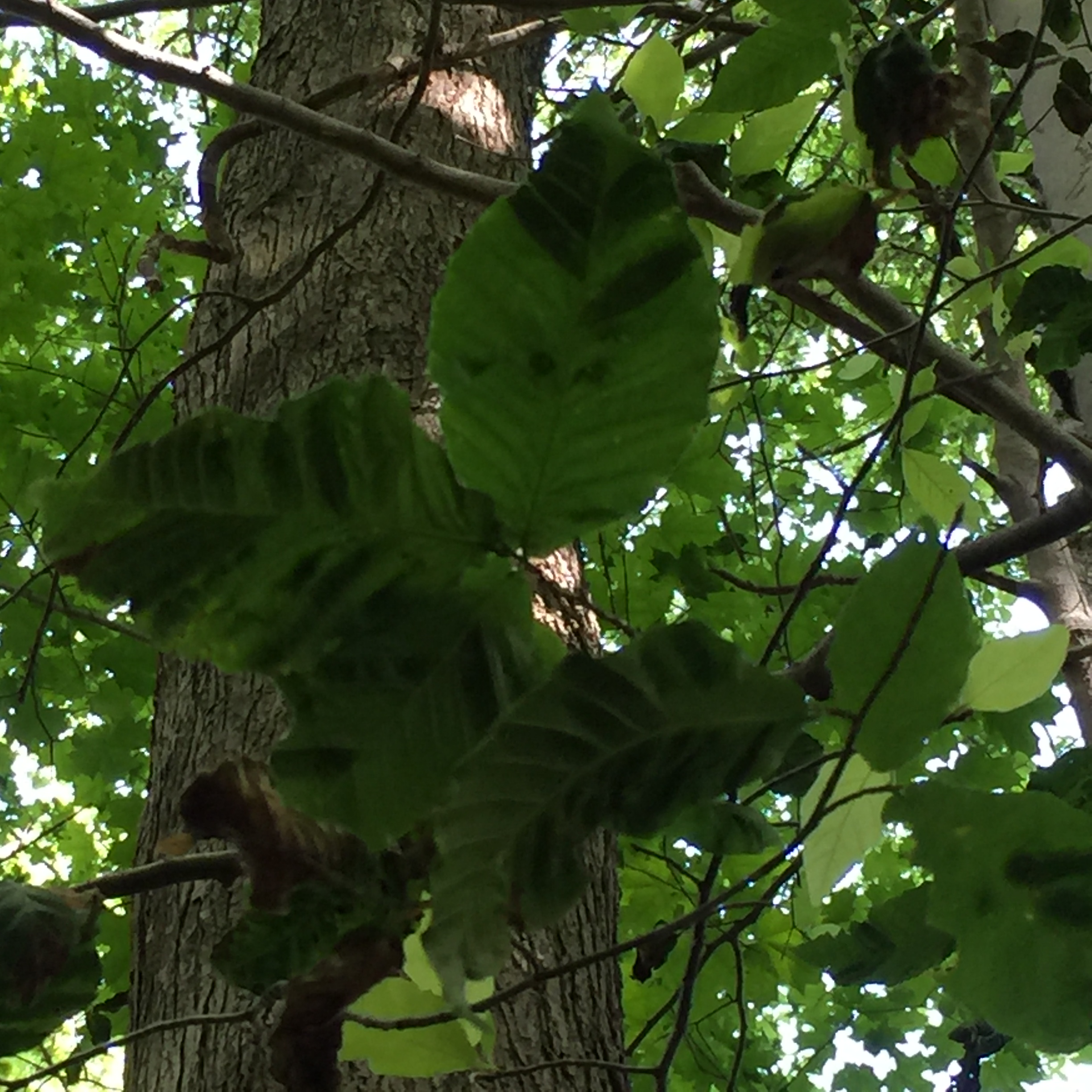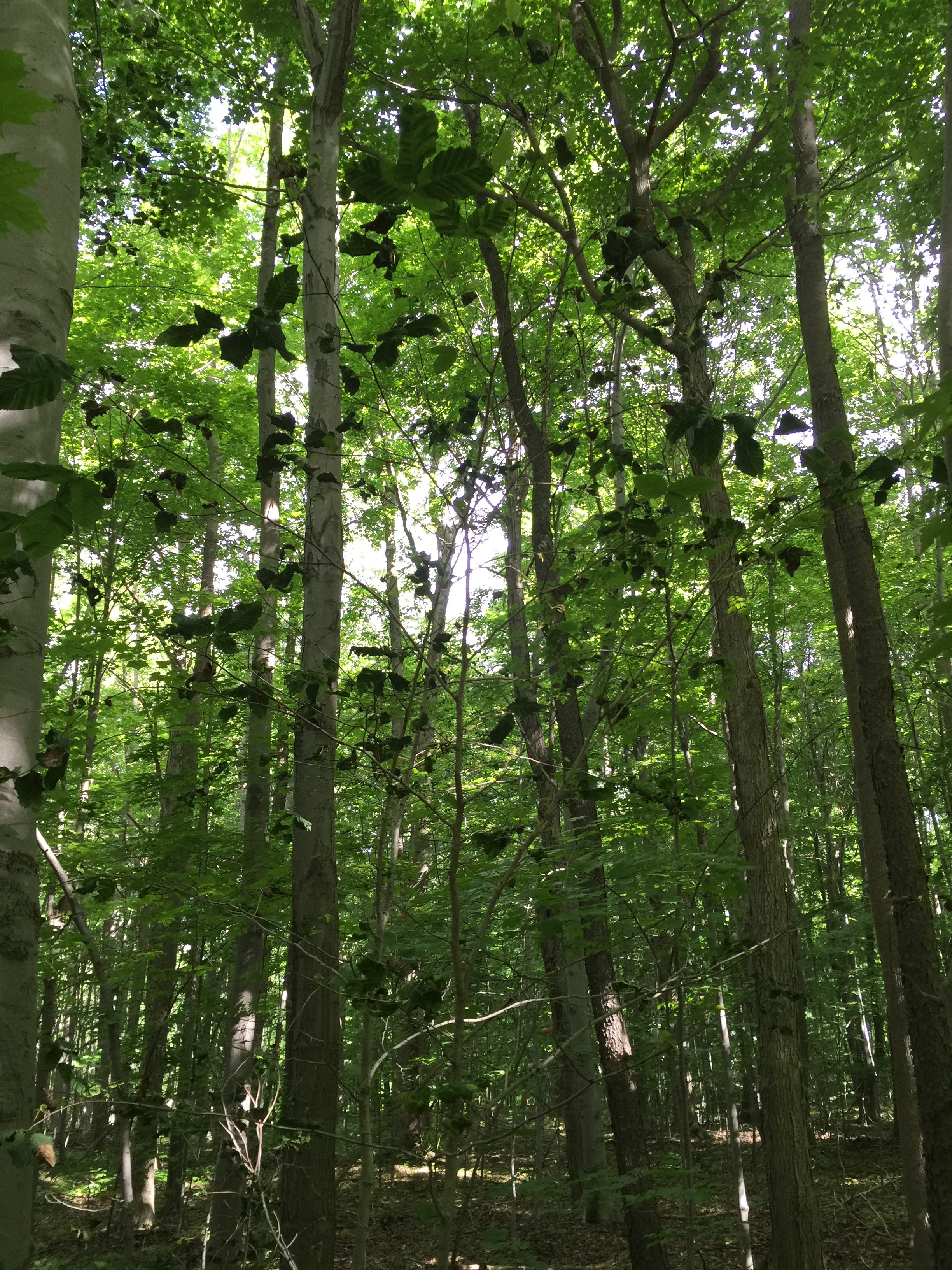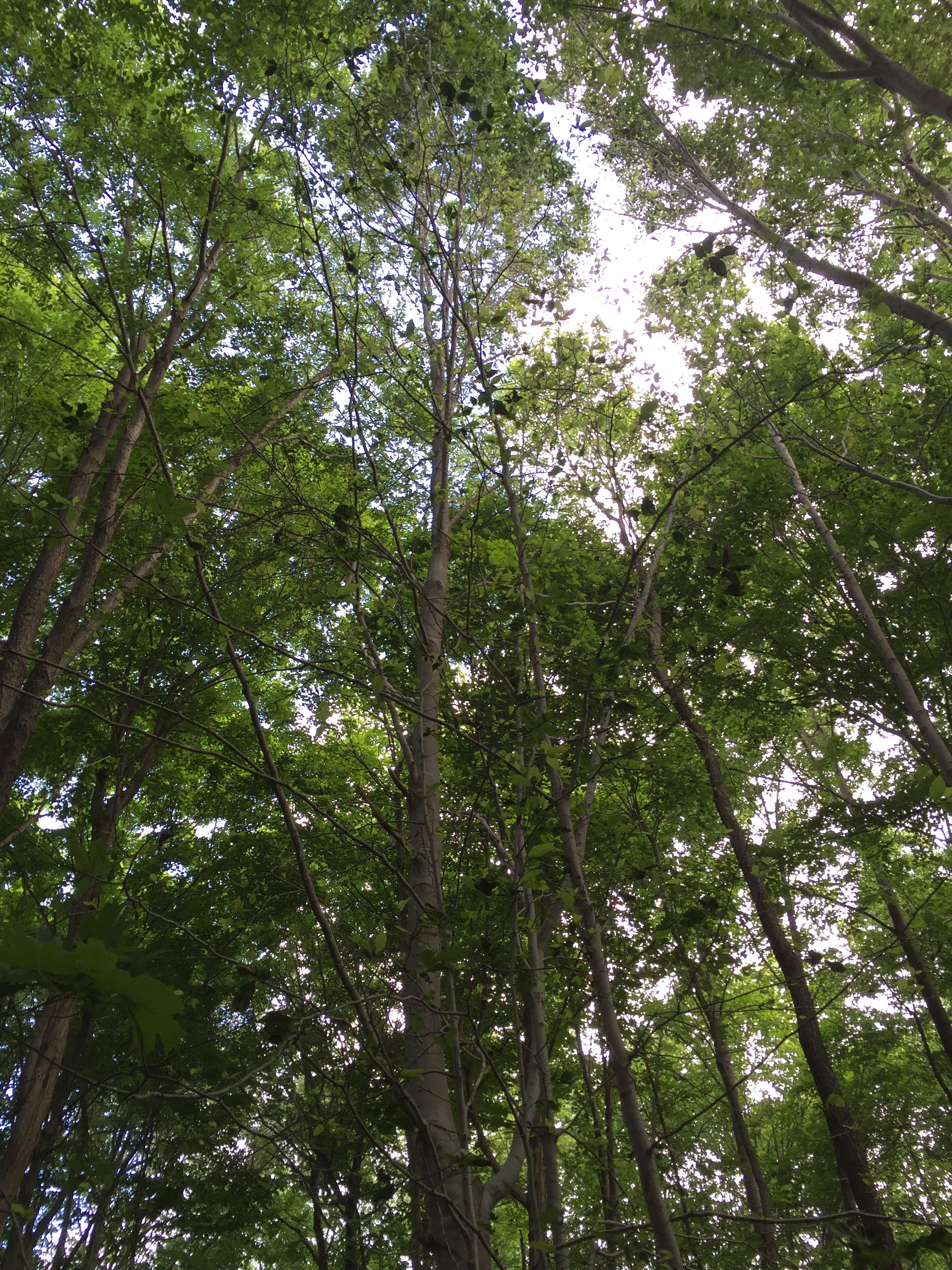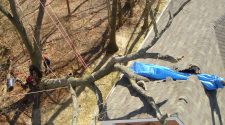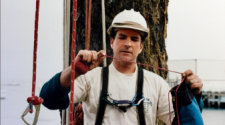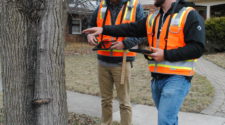Beech Tree Leaf Disease – No Known Cause
Ref: 161609 0530
The American Beech Tree has a new very serious disease, which was found in 2012 in North-East Ohio, and is expanding in Ohio counties and beyond.
This includes the counties of Ashtabula, Cuyahoga, Geauga, Lake, and Portage, as well as New York and Pennsylvania.
It has NO known cause.
It is Not: BBD (Beech bark disease), kretzschmaria, Beech blight aphid, or anthracnose fungus.
This relatively new affliction was found in 2012 by John Pogacnik, biologist with Lake County Metroparks, Ohio.
An article was written on June 9, 2014 by Jim McCormac, “Mysterious affliction killing beech trees”.
Link 1 Article: http://jimmccormac.blogspot.com/2014/06/mysterious-affliction-killing-beech.html?m=1 Link 2 – Jim McCormac Blog: http://jimmccormac.blogspot.com/
The “First signs of infestation involve dark striping on the green leaves as one looks into the backlit canopy ….” (the leaves look green & normal when viewed from the top, without back-light).
“The affected foliage then withers, dries, and yellows, ………..Ultimately the diseased trees die ….”
See Photo 1: 160608 Beech leaves with Dark strips, backlit
It affects all ages and sizes of Beech.
Both fully mature leaves, and very young “emerging” leaves are affected.
See Photo 2: 160608 Beech Sapling, Dark Strip Leaves at Top
Over the past few years, multiple samples of these symptoms have been collected and closely examined for insects, disease, viruses and any other pest contributing factors by many “tree disease experts”.
The US Forest service, Ohio Division of Forestry, USDA, ODA, Holden Arboretum, and Ohio State University have been looking at it over the last three years and have looked at everything from buds to roots.
Specifically, both the Ohio State diagnostic lab, the USDA forest diagnostic labs, and others have not been able to discover a definitive pest, cause or reason for these symptoms.
Holden Arboretum, which is a major 3600 acre facility, has just reported to me that their collections of European and Asian Beech, as well as American Beech are all affected. The USFS has recently collected soil samples at the site.
Personally, I live in Geauga Co. Ohio (3 miles east of Chardon, Ohio) and have 10 acres in “forestry”, which is largely maple, beech, tulip, etc. (designated by Ohio – Div of Forestry in 1992)
The Beech trees range in size from <1″ to ~36″ Diam. (hundreds of beech trees)
My trees are in much worse condition than shown in the article photos.
100 % of my Beech are severely affected by this “dark strip-brown-die” leaf infestation.
Many (most ?) of my leaves have this dark stripping (when backlit); but they seem to go directly to brown & die. There is no apparent “yellowing”.
The street I live on is 1 mile long.
100% of the Beech visible from the street are severely affected.
“Severe” means 90+% of the leaves on 1″ to 8″ trees are completely brown and / or have dropped.
Much larger trees may have “dark stripped” green leaves still left “temporarily” in the canopy.
See Photo 3: 160608 13 in. Beech + Saplings – Small Green Canopy but diseased
It is not known if the Beech trees can recover in the next 1 or 2 years.
Thanks to:
Mike Breth – Certified Arborist, Plant Health Care Manager – Independent Tree, Newbury, Ohio
John Pogacnik – Park Biologist – Lake Metroparks – Lake Co., Ohio
Jim McCormac – http://jimmccormac.blogspot.com/ – (Ohio)
Erik Draper – Assistant Professor & County Office Extension Director College of Food, Agricultural and Environmental Sciences – AgNR OSU Extension – Geauga County, Ohio
Mike Watson – Conservation Biologist – Holden Arboretum, Kirtland, Ohio
